When thinking about roofs, people usually forget about the elements they don’t see. While rooftop (shingles, shakes or tiles) protects the house against water or snow, the roof truss works like a foundation for it. For this reason, we decided to describe every part of roof structure, starting with sheathing. Thus, what should you know about roof sheathing?
Table of Contents
What Exactly Roof Sheathing is?
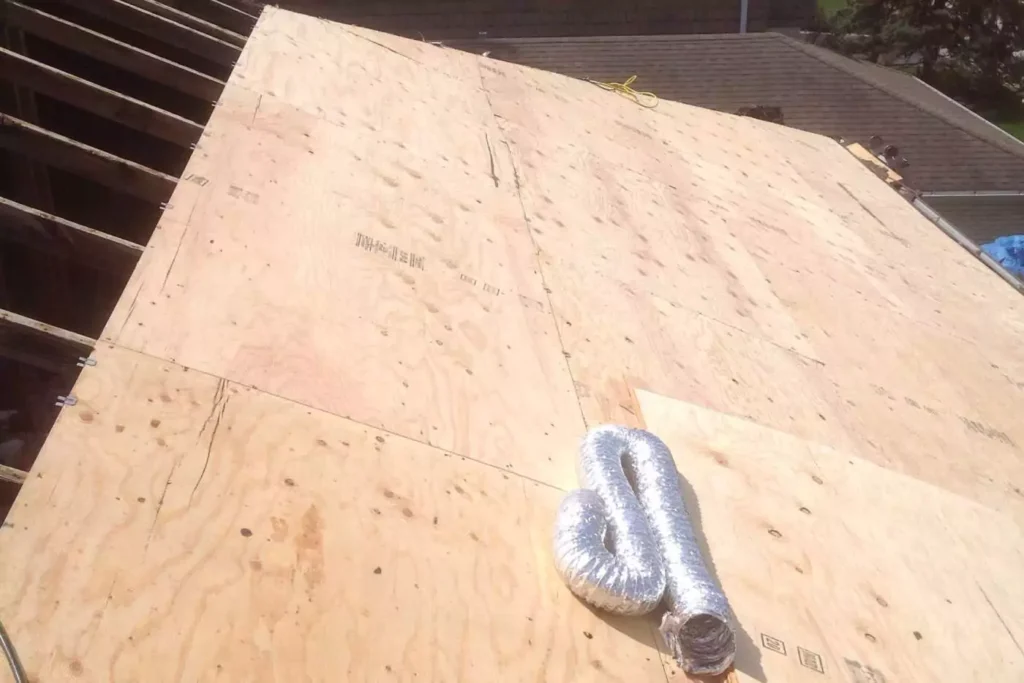
Roof sheathing (also roof decking, plywood) is a layer of wood placed on rafters in order to support the weight of the roof. It’s a base for the shingles, and its role is to protect them from bending. Plywood sheathing is also the roof truss’ element which is the underlayment nailed to.
Other Parts of Roof Truss You Need to Know
Apart from sheathing, which we will describe later, nearly every roof lays on a structure called roof truss. While each type of roof has its own type of truss, there are some universal components, present in virtually every timber roof.
Ridge (beam or board)

Ridge plays crucial role in every roof – it’s a horizontal beam or board, located at the highest part of the roof truss. In fact, it functions the same way as the backbone for a human. Ridge must spread the load across the rafters, distributing the tension created by the rooftop.
Purlins
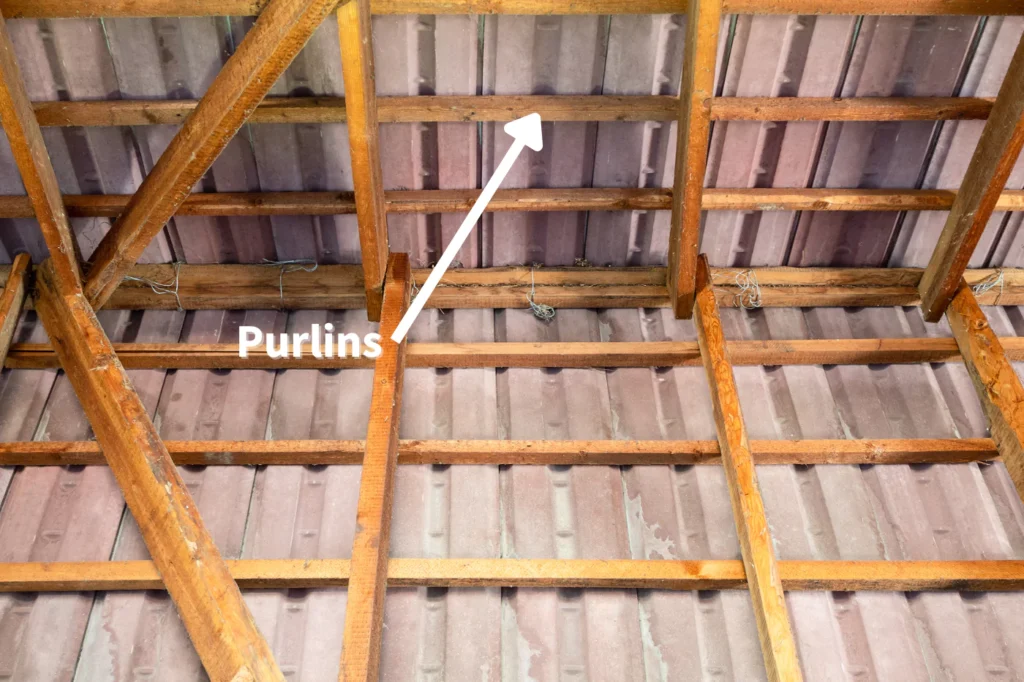
Purlins are in fact a kind of support for rafters. Their role is to reduce the load on rafters – as these reach up to 25 feet, the tension in the middle of them might be significant, especially if the roof is covered with heavy materials, such as slate, concrete or terracotta.
Use of purlins is not always essential – some smaller roofs are built without such a thing, mainly because of the limited homeowner’s budget.
Rafters
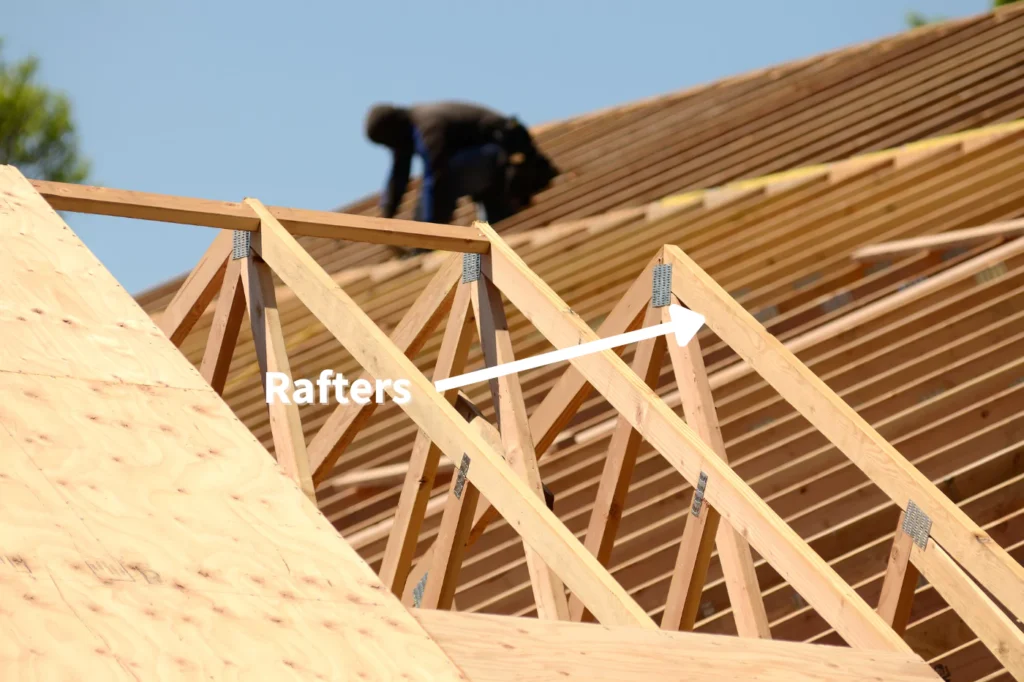
Along with ridge, there are also rafters – these beams, however, are placed vertically, not horizontally. In our opinion, rafters are actually the most important part of every roof structure. Their role is to transfer the load directly downwards, to the walls.
Why is Sheathing Installed on the Roofs?
The essential function of sheathing is to transfer the pressure generated by the roof to the rafters. A layer of plywood or boards evenly distributes the pressure to the sides, stiffening the shingles.
In addition to their structural function, sheathing plywoods also protect the interior of the house from leaks. Of course, the sheathing is additionally protected by underlayment, but necessarily, it is another layer that provides a barrier to water.
Finally, sheathing is necessary to be able to install the roof. The planks are perfect for nailing shingles to them and screwing on flashings. Thus, the plywoods are, so to speak, the foundation for the rooftop.
Materials Used in Roof Sheathing
The choice of sheathing material affects on roof’s performance, durability and lifespan. While the characteristics of common materials, such as plywood, OSB or wood (mainly pine) is quite well-known for roofing contractors, some projects require something more specific, such as a gypsum, fiber cement or even concrete.
Plywood

Plywood is a board made of thin layers of wood glued together. Each layer of wood is oriented in different way, to improve the strength of the whole structure. Properly produced plywoods are mostly elastic, and at the same time, durable.
Typically, roof sheathing is made of 3/8″ or 1/2″ thick plywood. When slate or terracotta tiles are used, or there only a few rafters in the structure, there is a need of use thicker boards, even up to 7/8″.
While plywood isn’t that commonly used as 20 years ago, it’s still probably the most popular sheathing material.
OSB
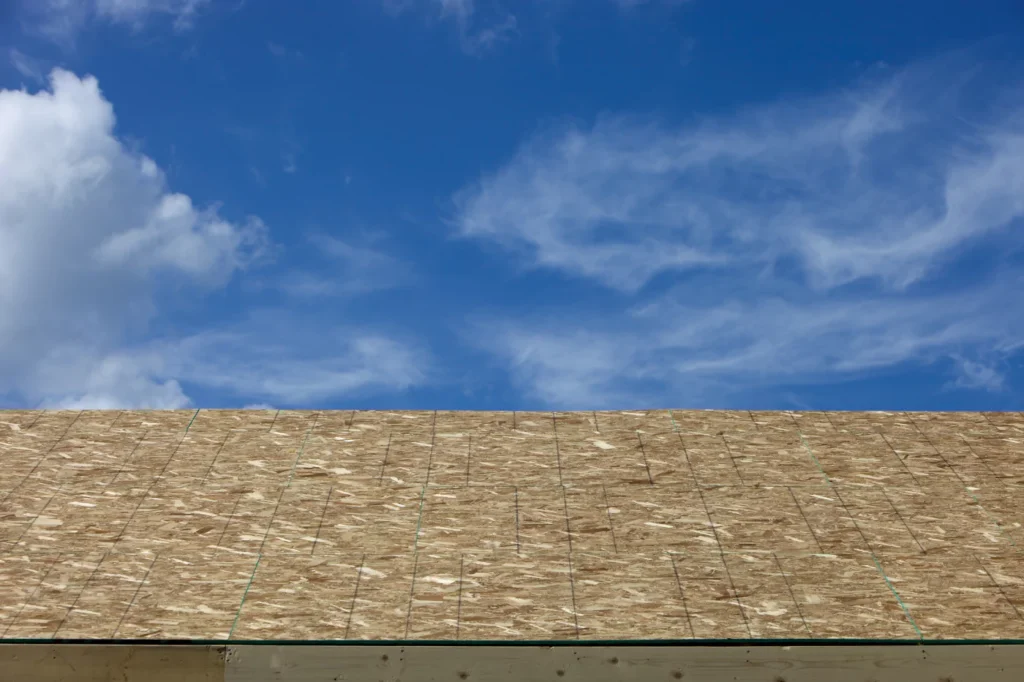
OSB (Oriented Strand Boards), are panels made of compressed wood strands mixed with adhesives. Strands are usually 3-5″ long and they face multiple directions, to enhance the rigidity and strength of the board
Due to its significantly lower price, OSB became much more popular than plywood these days. In many cases, 1/2″ boards will be completely sufficient, and at the same time, they cost around $15-16 for a 4 x 8′ sheet instead of $23-26.
While OSB offers noticeably worse bending resistance, it’s much stronger in terms of load bearing properties and shear capacity.
Planks (Boards)
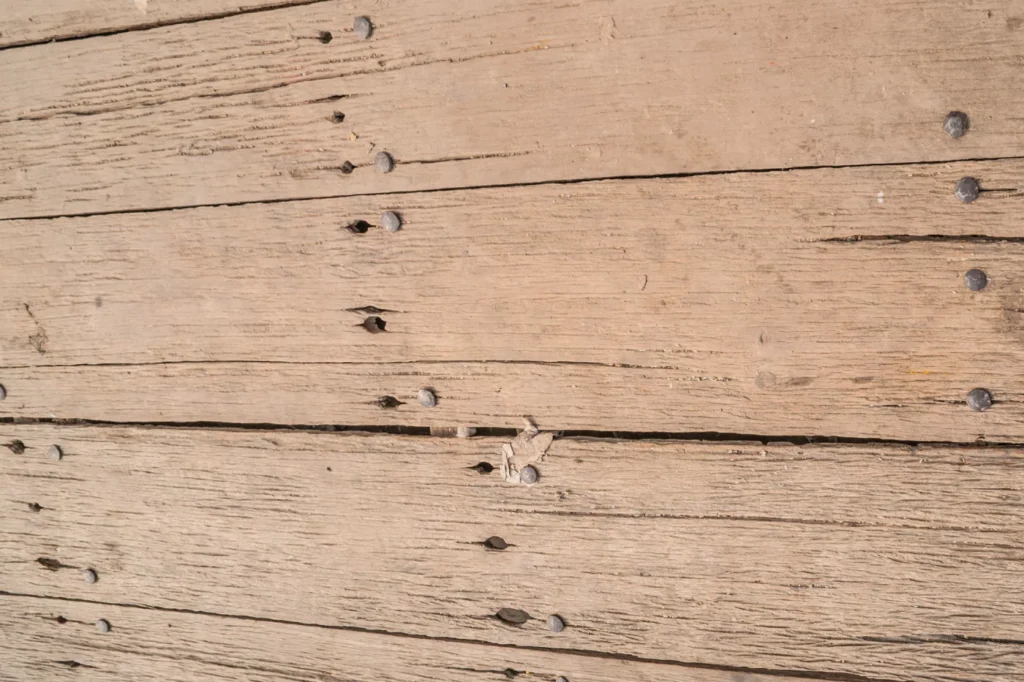
Plank sheathing is virtually not used anymore in the United States, but it’s still quite common in Europe. It’s a great sign of diversity in roofing at the two continents, which we mentioned in article dedicated to popularity of asphalt shingles in Europe.
Plank sheathing was always made with variety of types of wood, mainly fir, pine and spruce. What’s important, in order to protect them, roofers frequently soaked planks in chemicals preventing the mold and rot growth.
Typically, sheathing planks are 1″ thick, therefore they are usually used to support heavy roofs, made of concrete, clay or stone. There’s virtually no reason to use plank sheathing on shingle roofs these days.
Is it Necessary to Replace the Sheathing During the Roof Replacement?
As usually, it depends. If your old roof leaks, there is much chance that it will be necessary, at least in part of the roof area. However, if you decided to replace the roof because of its degradation or to improve the thermal insulation properties, sheathing might be in condition good enough to be used for next 20 or 30 years.
Generally speaking, well preserved sheathing is virtually eternal. Plywood or planks, if well waterproofed, aren’t susceptible to any dangerous incentives such as UV rays, water or pests.
Unfortunately, as a roofing contractor we regularly see rotten, molded or cracked sheathing. That’s why, during the shingle replacement, all sheathing plywoods or OSB’s should be meticulously inspected.
Is Sheathing Replacement Expensive?
It might be expensive. As a roofing contractor, we charge every $150 for each 4 x 8′ board we replace (disposal cost included). Cost of replacing all the plywood boards on a typical roof ranges therefore from $9,000 to even $19,000.

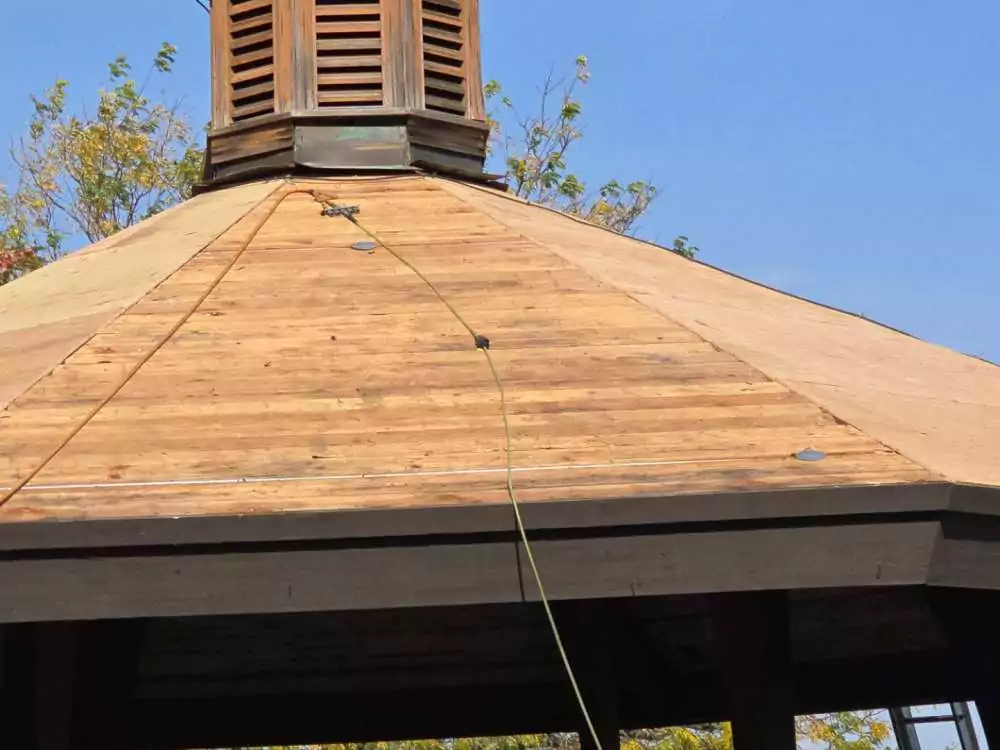
Leave a Reply